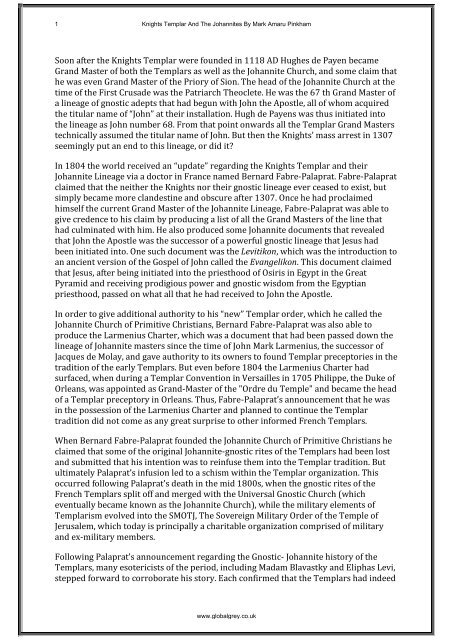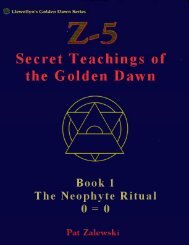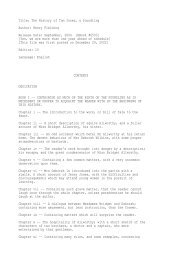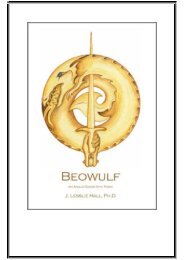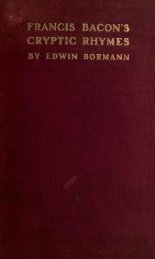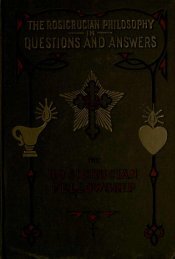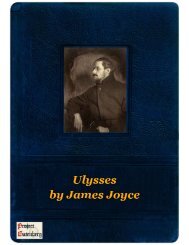download PDF version: 651KB - Global Grey
download PDF version: 651KB - Global Grey
download PDF version: 651KB - Global Grey
You also want an ePaper? Increase the reach of your titles
YUMPU automatically turns print PDFs into web optimized ePapers that Google loves.
1 Knights Templar And The Johannites By Mark Amaru Pinkham<br />
Soon after the Knights Templar were founded in 1118 AD Hughes de Payen became<br />
Grand Master of both the Templars as well as the Johannite Church, and some claim that<br />
he was even Grand Master of the Priory of Sion. The head of the Johannite Church at the<br />
time of the First Crusade was the Patriarch Theoclete. He was the 67 th Grand Master of<br />
a lineage of gnostic adepts that had begun with John the Apostle, all of whom acquired<br />
the titular name of “John” at their installation. Hugh de Payens was thus initiated into<br />
the lineage as John number 68. From that point onwards all the Templar Grand Masters<br />
technically assumed the titular name of John. But then the Knights’ mass arrest in 1307<br />
seemingly put an end to this lineage, or did it?<br />
In 1804 the world received an “update” regarding the Knights Templar and their<br />
Johannite Lineage via a doctor in France named Bernard Fabre-Palaprat. Fabre-Palaprat<br />
claimed that the neither the Knights nor their gnostic lineage ever ceased to exist, but<br />
simply became more clandestine and obscure after 1307. Once he had proclaimed<br />
himself the current Grand Master of the Johannite Lineage, Fabre-Palaprat was able to<br />
give credence to his claim by producing a list of all the Grand Masters of the line that<br />
had culminated with him. He also produced some Johannite documents that revealed<br />
that John the Apostle was the successor of a powerful gnostic lineage that Jesus had<br />
been initiated into. One such document was the Levitikon, which was the introduction to<br />
an ancient <strong>version</strong> of the Gospel of John called the Evangelikon. This document claimed<br />
that Jesus, after being initiated into the priesthood of Osiris in Egypt in the Great<br />
Pyramid and receiving prodigious power and gnostic wisdom from the Egyptian<br />
priesthood, passed on what all that he had received to John the Apostle.<br />
In order to give additional authority to his “new” Templar order, which he called the<br />
Johannite Church of Primitive Christians, Bernard Fabre-Palaprat was also able to<br />
produce the Larmenius Charter, which was a document that had been passed down the<br />
lineage of Johannite masters since the time of John Mark Larmenius, the successor of<br />
Jacques de Molay, and gave authority to its owners to found Templar preceptories in the<br />
tradition of the early Templars. But even before 1804 the Larmenius Charter had<br />
surfaced, when during a Templar Convention in Versailles in 1705 Philippe, the Duke of<br />
Orleans, was appointed as Grand-Master of the "Ordre du Temple" and became the head<br />
of a Templar preceptory in Orleans. Thus, Fabre-Palaprat’s announcement that he was<br />
in the possession of the Larmenius Charter and planned to continue the Templar<br />
tradition did not come as any great surprise to other informed French Templars.<br />
When Bernard Fabre-Palaprat founded the Johannite Church of Primitive Christians he<br />
claimed that some of the original Johannite-gnostic rites of the Templars had been lost<br />
and submitted that his intention was to reinfuse them into the Templar tradition. But<br />
ultimately Palaprat’s infusion led to a schism within the Templar organization. This<br />
occurred following Palaprat’s death in the mid 1800s, when the gnostic rites of the<br />
French Templars split off and merged with the Universal Gnostic Church (which<br />
eventually became known as the Johannite Church), while the military elements of<br />
Templarism evolved into the SMOTJ, The Sovereign Military Order of the Temple of<br />
Jerusalem, which today is principally a charitable organization comprised of military<br />
and ex-military members.<br />
Following Palaprat’s announcement regarding the Gnostic- Johannite history of the<br />
Templars, many esotericists of the period, including Madam Blavastky and Eliphas Levi,<br />
stepped forward to corroborate his story. Each confirmed that the Templars had indeed<br />
www.globalgrey.co.uk


